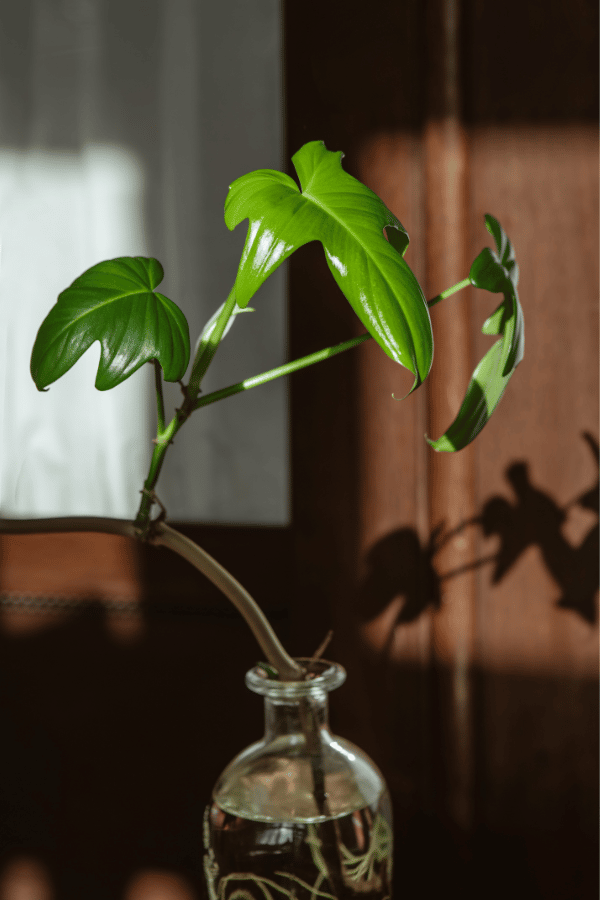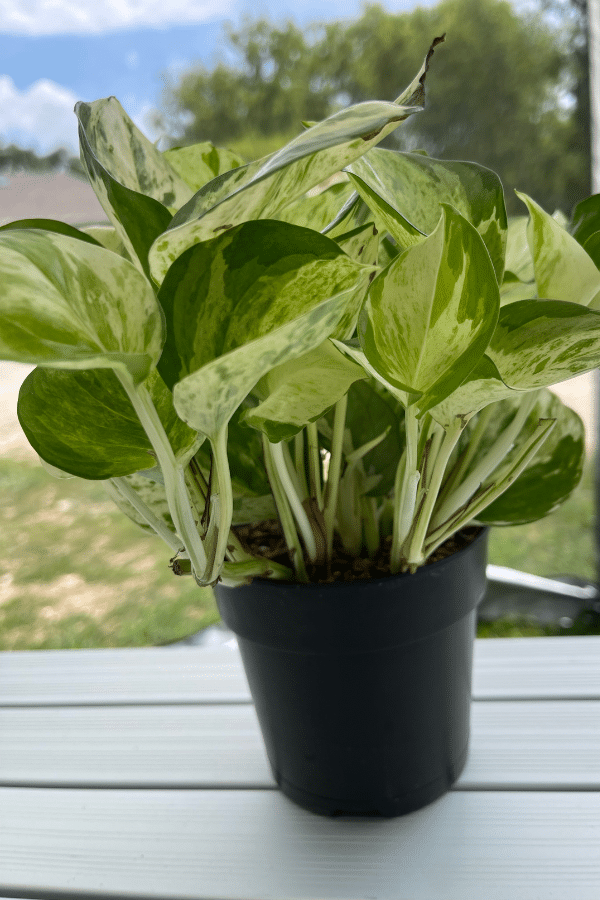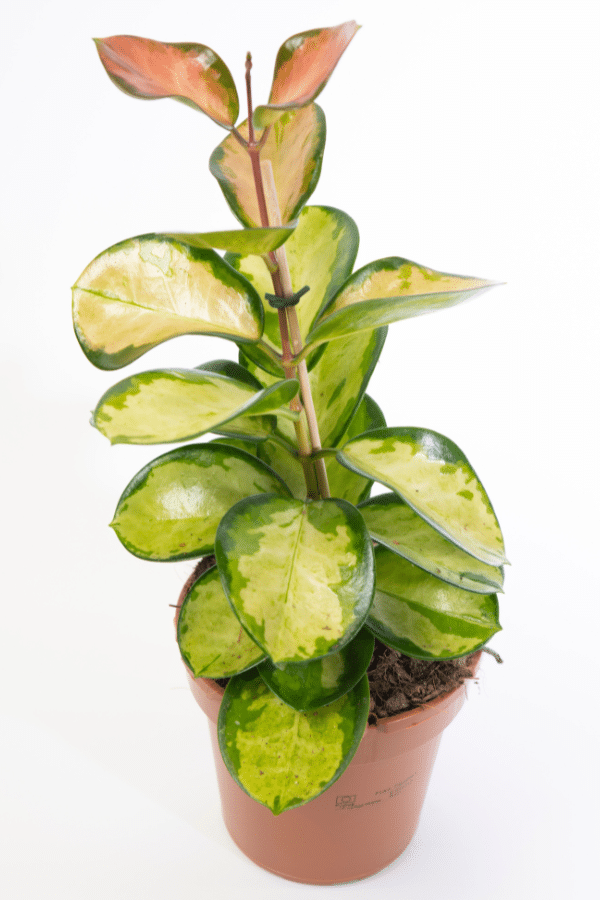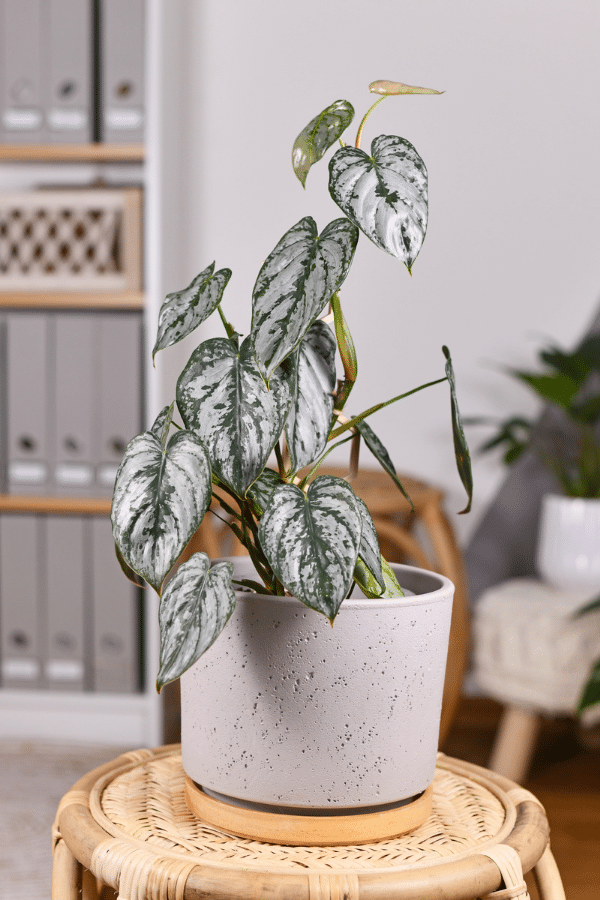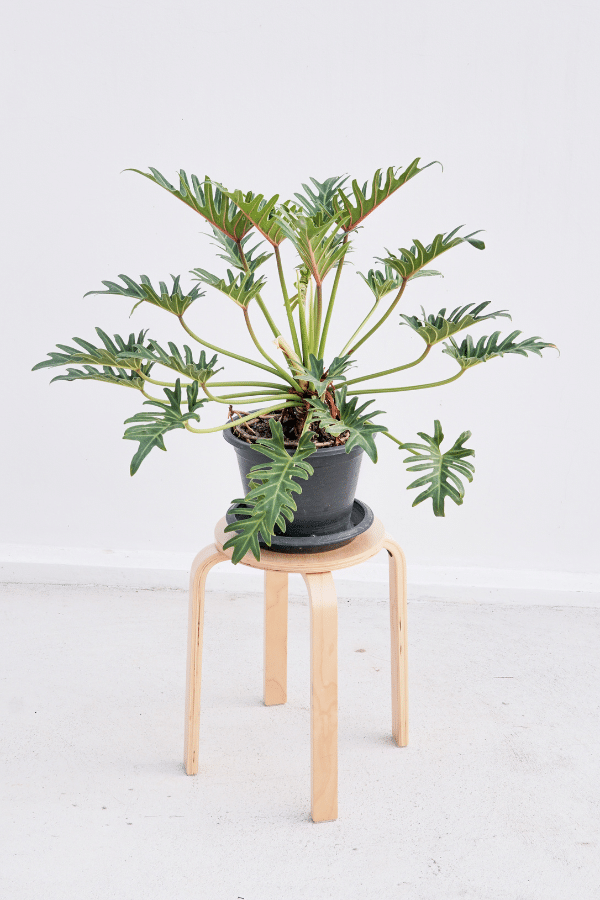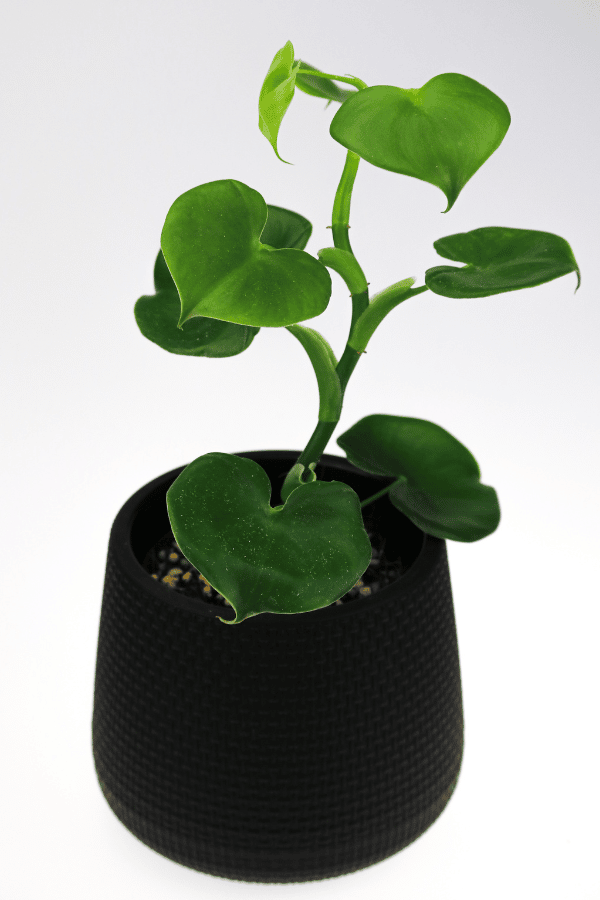Bird of Paradise (Strelitzia)
Bird of Paradise care is an easy Strelitzia plant to grow and care for. If you are looking for a slow-growing plant that can reach a height of 6 feet tall that gives off a tropical vibe to your space, a Bird of Paradise plant may be for you.
To give this Strelitzia plant the best care, it requires well-draining soil, keep the soil moist by, provide it with bright indirect sunlight, temperatures ranging from 65-85F, and average to high humidity levels.
Quick Care Overview
| Common Name | Bird of Paradise |
| Scientific Name | Strelitzia |
| Family | Strelitziaceae |
| Origin | South Africa |
| Growth Rate | Slow |
| Identification | Trunkless plant with large upright leaves |
| Height | Up to 6 feet tall |
| Soil | Well-draining soil |
| Water | Keep soil consistently moist |
| Temperature | 65-80F |
| Sunlight | Bright indirect sunlight |
| Toxic to Cats & Dogs | Yes |
| Toxic to Humans | Yes |
| Pests | Scale, whitefly, aphids |
| Diseases | Root rot, gray mold |
Below we will dive deep into this Bird of Paradise care guide.
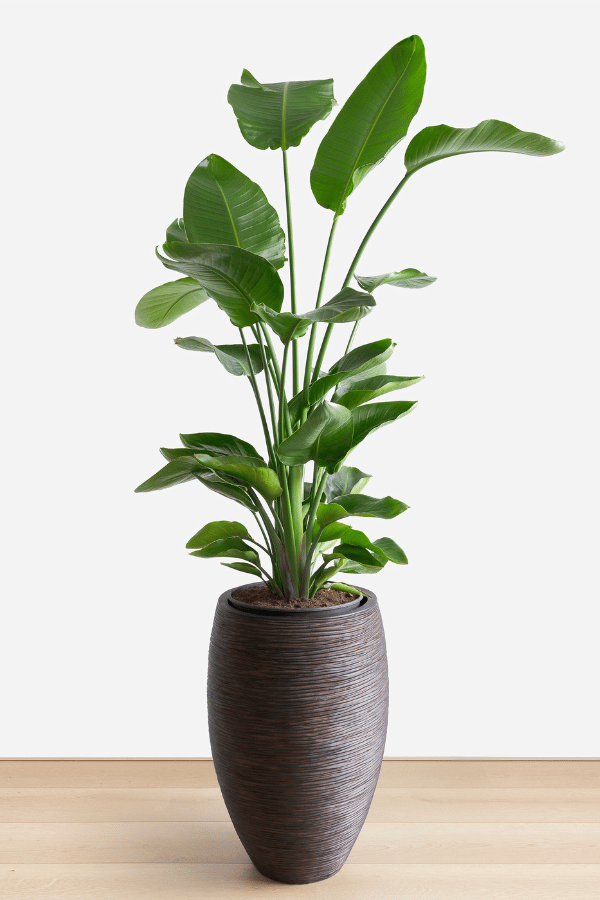
Bird of Paradise History
Strelitzia, otherwise known as the Bird of Paradise, is a distinctive, well-known tropical plant that closely resembles a banana plant. With flowers that have a bird-like appearance, this vigorous-growing plant is easy to care for as an indoor potted plant.
Bird of Paradise Identification
Bird of Paradise is a trunkless plant with large, upright leaves, similar to a banana plant. Leaves may grow up to 1.5 feet long. Distinctive, colorful blooms appear to look similar to a tropical bird in flight.
Bird of Paradise Growth Facts
Strelitzias are large, beautiful plants that will produce gorgeous flowers after 3-5 years or whenever the plant reaches maturity. You will be rewarded with gorgeous blooms if you provide this plant with bright light, regular watering, and warmth.
How Big Does a Bird of Paradise Get?
Bird of Paradise can reach 6 feet tall and up to 4 feet wide when grown indoors.
Bird of Paradise Care
To produce big, gorgeous blooms, you will need to give your Strelitzia an annual feeding in spring before new growth begins (compost is a good choice) and fertilize regularly throughout the growing season. To increase the chance of survival and blooming, move your bird of paradise outdoors during the summer to get the sunlight it craves.
Bird of Paradise Soil
Birds of Paradise require a well-draining, rich soil for growing success. A commercial potting mix with incorporations of compost and perlite will treat this plant nicely.
Bird of Paradise Fertilizer
Strelitzia is a heavy feeder, so you will need to fertilize it frequently. Give your plant an extra boost in early spring by adding compost to its container. To support its growth during the growing season, you will need to fertilize your Strelitzia weekly with a balanced, liquid fertilizer. Do not fertilize during winter.
Bird of Paradise Watering
Birds of Paradise like to remain consistently moist but not oversaturated with water. Its large leaves cause this plant to lose moisture quickly, and as such, it may need to be watered daily during the warm growing season. Do not allow this plant to sit in excess water within the container’s drainage tray. Excess water will cause its foliage to turn brown. Not enough water will cause this plant’s foliage to turn yellow.
Bird of Paradise Light Requirements
This plant requires direct sunlight to bloom. Unlike other tropical plants, several hours of direct sunlight is fine. However, too intense of summer sun may cause foliage burning, especially with younger plants. Therefore, this plant should be placed in a bright room, preferably next to a southern-facing window.
Bird of Paradise Temperature & Humidity
Birds of Paradise like to be kept in warm, humid environments. You should strive to keep your plant above 60 degrees Fahrenheit at all times. Though this plant may recover from frost-damage, it will thrive if you keep it warm and protected from the cold. As this plant grows best with above-average humidity, installing a humidifier or pebble tray will be beneficial to your plant.
Repotting Bird of Paradise
As this plant grows rapidly, it will need a 10-14″ pot. Repot annually, moving up a container size until the plant reaches maturity (3-5 years). After the plant reaches maturity, you should allow it to become rootbound and desist from repotting. Repotting will disrupt the bloom cycle.
Bird of Paradise Maintenance & Pruning
Blooms of the Bird of Paradise will last a few weeks before dying. Spent blossoms should be removed. Periodically remove any old, diseased, or damaged foliage using sharp, clean shears. An overly large plant may be pruned back in early spring using loppers or hand pruners. Selected leaves and stems may be cut down to just above the ground if overcrowded.

Bird of Paradise Propagation
You may quickly propagate your Birds of Paradise through division. When dividing, it is best to use mature plants that have been blooming for at least three years. To divide, remove new growth or offshoots from the mother plant that have at least three leaves. Next, divide the rhizome using either a sharp, clean knife, a shovel, or a saw. Finally, repot the mother plant and the divided offsets in their own container, refresh the potting mix and water thoroughly, and place them in indirect light.
Bird of Paradise Toxicity
Toxicity to Humans
The Bird of Paradise plant is considered to be toxic to humans and should not be consumed. Ingestion may lead to breathing difficulties and irritation of the digestive system.
Toxicity to Cats & Dogs
Bird of Paradise is considered toxic to household pets. Do not allow your pet to consume this plant.

Bird of Paradise Problems
Bird of Paradise Leaves Turning Yellow
Yellowing of foliage may be due to lack of humidity, lack of nutrients, lack of water, or age.
Bird of Paradise Leaves Turning Brown
When the foliage of your Strelitzia turns brown, it is typically indicative that your plant is being overwatered.
Bird of Paradise Diseases
Birds of Paradise may suffer from plant diseases such as root rot and gray mold. Ensure that you do not overwater your plant.
Bird of Paradise Pests
Birds of Paradise may be affected by typical indoor houseplant pests such as scale, whiteflies, or aphids. Periodically check your plant for signs of infestation. Upon identifying an infestation, isolate your plant, and treat it with a pesticide, such as neem oil or insecticidal soap.

